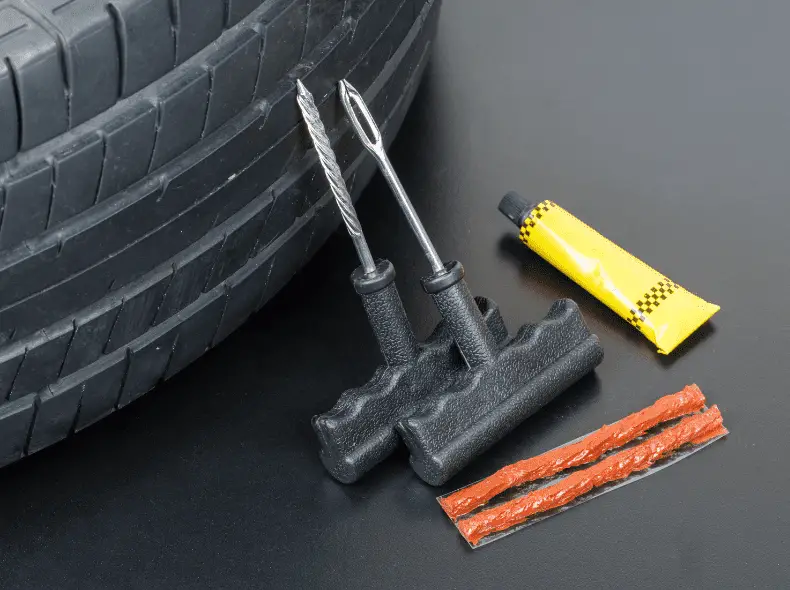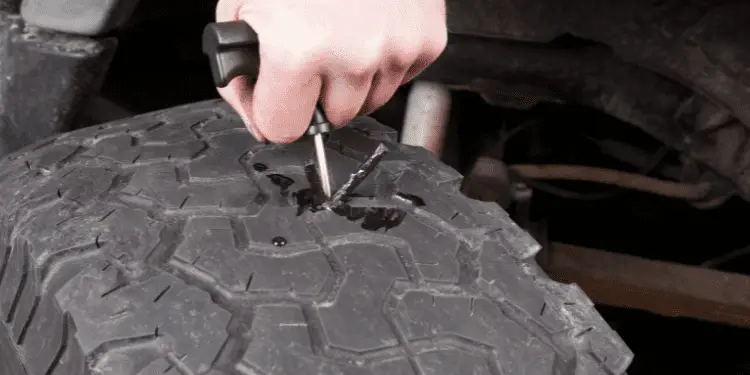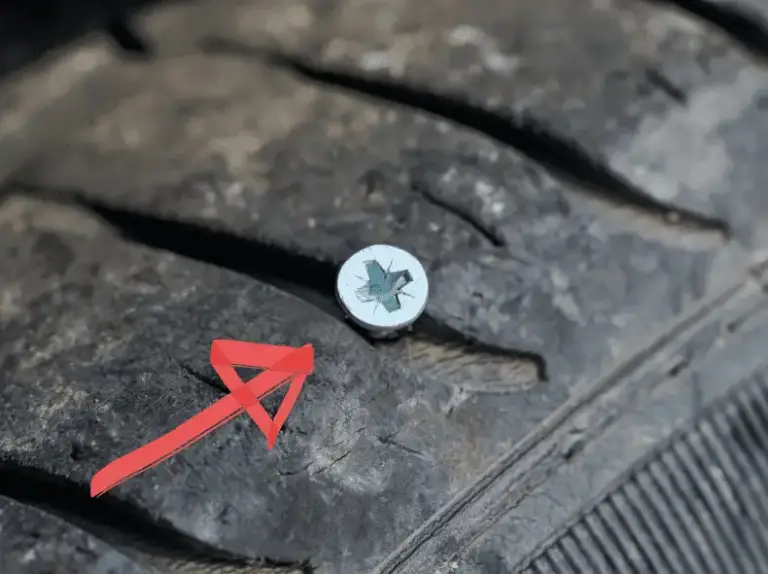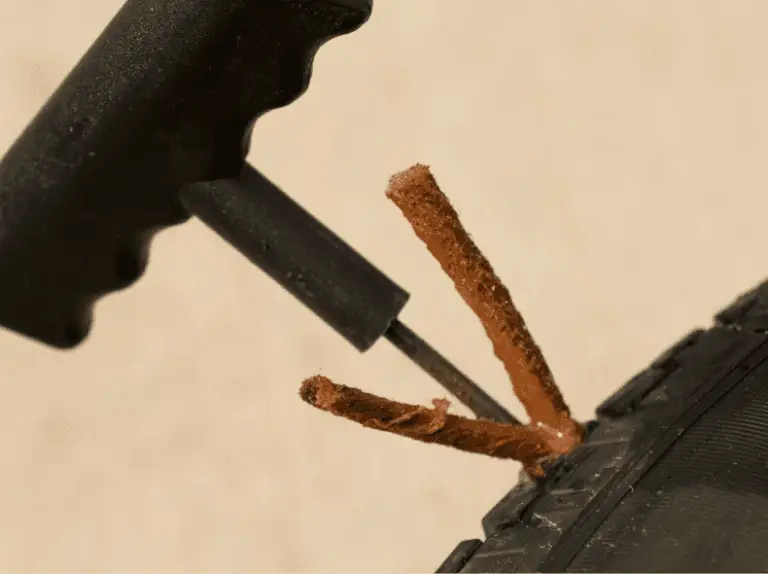You’re here because you are either contemplating putting a plug in your tire or have done some time ago and wondering whether the plug will last or whether it will need to be replaced.
It’s a good question and is asked many times a month by people concerned about the long term durability of tire plugs.
Before we get into whether tire plugs last in your tire, it’s important to know when you can and can’t plug a tire.
If you have a hole in the sidewall or shoulder – the curved section of tread that runs down towards the side wall- you cannot plug the tire in any circumstances.
It is dangerous to do so because the hole’s location is not in the reinforced steel tire area underneath the tire’s main tread.
Tire plugs can last from a day to many months and thousands of miles. Whether they should be viewed as long-term solution is another matter completely.
Look at the instructions on any tire plug kit, and there will be a disclaimer. Most state that a tire plug is temporary and good for 100 miles at less than 50 mph before a proper repair or replacement should be done.
Many people online say their tire plugs have lasted for years. However, is it really worth taking the risk on something as important as road safety?
There are litigation lawyers who will quite happily take on negligence cases if someone gets injured by a vehicle that has a tire blowout that wasn’t repaired in line with the manufacturer’s instructions or a repair that wasn’t completed to an approved standard.
That’s before we even look at the guilt in the human cost of potentially causing a serious accident.
The Quality of The Plug Repair
As with anything, the effort and time put into doing something properly normally pay dividends in the long run. There is no difference with plugging a tire.
If you follow the steps correctly, your tire plug will likely last longer.
So what are the correct steps in plugging a tire?
Firstly you need to buy a decent-quality tire plugging kit. The price varies considerably, but you generally get what you pay for.

Mushroom plugs are better and last longer than plug strips, but they cost more. Mushroom plugs are more like rivets and hold the plug in from the inside, although you don’t need to remove the tire to fit them.
Plug strips don’t do this; they go straight to the hole and don’t hold themselves inside the tire. Tire strips rely on an extremely tight fit around the hole and not the plug being held in place from the inside.
Although it is important to ream out the hole to get rid of any dirt or debris and to make the hole completely circular, do not spend too much time inserting the reaming tool in and out as you may make the hole likely too big if you continually do this.
Often Read By Visitors: Is Tire Sealant Bad For Tires? Myths Debunked
Common Signs Your Tire Plug Isn’t Lasting?
The most obvious sign is that it is leaking air. Obvious, you may think. Now, if your tire is going down noticeably over the course of a week, it is obvious that the tire repair is failing.
Quite often, though, tire plugs leak an insignificant amount of air.
This may or may not concern you, but it could be a sign the tire plug isn’t lasting, and it will need to be replugged, patched, or replaced soon.
Once a tire plug starts leaking, it will only get worse. It’s better to know that it is leaking a bit rather than find out one morning that it is completely flat and you were unaware it might happen.
One easy test is to get a spray bottle of soapy water and spray it around the tire plug.
Look for small air bubbles after a minute or two. If you see them, you know your tire plug is leaking air.
It may not be enough to cause immediate concern but far better to know in advance and take action before you get a flat at an inconvenient time.

Tire plugs are made of a leather strip encased in rubber.
Although rubber is very hard wearing and resistant to chemicals and weather conditions, leather is not so much.
If the rubber encasing your leather strip gets chemicals or road salt on it, it leaves the leather vulnerable to drying out and becoming brittle.
When this happens, it won’t last as it doesn’t completely fill the hole as intended and can leak.
There is often a dispute about whether a strip should be cut back or left in situ once a repair has been done. It makes no difference at all.
If you don’t cut the excess away, driving down the road for a few hundred miles will erode the excess away anyway.
Most kits come with a cheap knife to allow you to cut the excess off if you want to.
The US Tire Manufacturers Association issued guidance on how tires should be repaired legally and safely. They state that
A rubber stem, or plug, must be applied to fill the puncture injury and a patch must be applied to seal the inner liner. (A plug alone is an unacceptable repair.)
https://www.ustires.org/tire-repair-basics
In Conclusion
A tire should be repaired with a plug and a patch.
Tire plug kits often have a disclaimer saying that their plugs are only meant to be for up to 100 miles and speeds up to 50 mph.
Although some people swear that plugs on their tires last for many years and thousands of miles, you’ll have to ask yourself whether this is a viable and sensible option.
If tire associations and tire plug kit manufacturers say that tire plug kits are only temporary or should only be used in conjunction with an inner patch, it surely makes sense not to use tire plugs long-term.


![Can You Plug A Tire Twice [Depends On This] newly-plugged-tire](https://carzaza.com/wp-content/uploads/2023/12/newly-plugged-tire-300x224.png)
![How Long Does A Tire Patch Last? [ANSWERED] tire-patched](https://carzaza.com/wp-content/uploads/2023/12/tire-patched-300x224.png)

![Tire Plug Has A Slow Leak - What To Do? [ANSWERED] tire-being-plugged](https://carzaza.com/wp-content/uploads/2023/12/tire-being-plugged-300x224.png)


